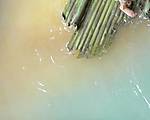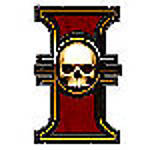1⁄35Wet Feet
2
Comments
The landscape
It seems a lot of Russia and Ukraine’s territory is very sandy. Banks of a river are supposed to be too, so I tried to get a very desert feeling about that landscape (we’re still supposed to be early September after a few storms that made the river swollen a bit). After unspectacular modelling of the river banks which involved plaster of Paris and fingers, I had some fun with paints. I mixed some colour pigments with a small amount of thinner and got something that looked like a grainy paste that I applied on the whole of the bank. Once it dried I used a hard brush and proceeded to wipe up the excess. Eventually I put some clearer paste on highlight areas and another darker shade behind the plane’s tail.The nature
Every bit of ground cover must be ‘burnt’ out around early September. So I made some high grass out of a broom made out of silk. It had some POINTED ended hair as opposed to brooms which have cut ends. When these cut ends are applied to a diorama they appear to be as rude as a forest of matches.To make the tall brown-seeded plants that you can find everywhere through Europe around late summer and autumn (and sometimes later), I proceeded to twist a few small electric wires, I then coated these in superglue and dipped them into some very small plastic beads that you can find covered with active coal (charcoal) in those water-purifying devices that a lot of people have in their kitchens (sold at least in France and Germany as the “Brita” brand).
To separate the beads from the coal you’ve got to put some in a small cup and shake it a bit so that the coal (which is lighter) filters to the top of the plastic beads. You can wipe a good part of it this way.
And then there’s my small tree. I used a few Sea Foam branches that I tied together to make a bush. I also tried to wipe out the small black seeds under the branches armpits. I coated the different main branches with some green stuff so that the whole thing will look like a trunk. I used some real roots from the garden to make the tree’s roots, eventually tying them up with the tree using green stuff again.
But then the leaves always prove to be a problem. For years I rarely modelled trees because all the ways I found to make some decent looking ones couldn’t look like the real thing at three feet. So here I experimented using a quite dumb way: I made a 3-5 millimetre wide roll out of green stuff whose section could look like a leaf. I let it dry and proceeded to cut some very thin slices. As the green stuff doesn’t get too stiff once dry I tried to deform the flat shapes with my fingers. Once I made enough I covered the small tree with white glue and poured the first half. I eventually finished the job by gluing the second half leaf by leaf on some strategic places. The green stuff is a nice dull green shade which provides a good base for further paint job.
I finally used some bits of sea foam to model various grown up ferns.
The water
There’s lots of literature on the internet and elsewhere to make and shape water using clear polyester resin, so I won’t add much except for one or two tricks about TINTS and LAYERING.First, I would avoid the transparent colours to tint the resin except when modelling some lagoon or any other places where the water is supposed to be pure. I personally use some oil paints for tint. Always remember to use very little paint as the final result almost always appears to be darker and more opaque than what you can see in your mixing can. Second, use layering to make some fine blends of colours. To make this brown-blue gradient I poured two tinted parts of resin on either sides of the diorama at the same time. At the place were the tints meet the mix between the two shades will look a bit like a leopard skin. Never mind, just use some extra layers of slightly tinted resin above so the leopard skin effect slowly disappears.
To make those water effects (including the black part) I might have used six coats, including some slightly tinted white ones to clear the water’s colour and make the border colours disappear.
I made the water waves with some acrylic gloss medium, but remember this stuff can be a traitor, it retracts a lot when drying and I would also advise to use thin coats that are not thicker than 3mm to be sure the entire coat will actually dry while staying transparent. This acrylic medium is glossy but really not enough – in fact it looks terribly *plastic* so I added a big coat of Humbrol Clear Cote which also has the great advantage of hiding some small imperfections :).
Around the last layer of resin I spread some of these new Plus Model leaves over the water that I had painted previously. This stuff is just plain great but I won’t use anymore in the future, I think the price of these is certainly superior to gold, and you don’t get a lot in one of their small bags.
Comments
a very nice diorama and very informative article. I believe what you have written about dioramas in the first page should be read by all modelers.
Thanks and congrats
JUL 11, 2006 - 01:29 AM
Hello JB,
a great diorama and a great SBS !!!!
I think to create a realistic water scene is one of the harder things !!!
Thanks for sharing !!!
Cheers,
Markus
JUL 11, 2006 - 01:59 AM
Copyright ©2021 by JB André. Images and/or videos also by copyright holder unless otherwise noted. The views and opinions expressed herein are solely the views and opinions of the authors and/or contributors to this Web site and do not necessarily represent the views and/or opinions of Armorama, KitMaker Network, or Silver Star Enterrpises. All rights reserved. Originally published on: 2006-07-10 00:00:00. Unique Reads: 30518













